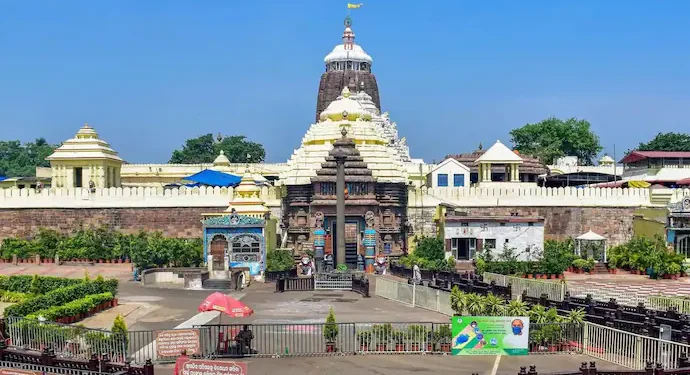Bhubaneswar/Puri- In a disturbing pattern unfolding within the sacred premises of the 12th-century Shree Jagannath Temple in Puri, Odisha, security has once again been compromised with the discovery of hidden cameras being smuggled inside by unsuspecting devotees. Within a span of just five days, two separate incidents have come to light, raising serious questions about the effectiveness of surveillance in one of India’s most revered religious sites.
On the heels of a similar breach the previous day, a young man from Paschim Bardhaman in West Bengal was intercepted today while attempting to enter the temple through the Paschima Dwara, the western gate. What seemed like a pair of regular glasses turned out to be equipped with a concealed camera. Alert temple security detained the individual, identified as Pratish Pal, and seized both his spectacles and mobile phone for examination. He is currently under interrogation as officials investigate the motive and potential misuse of captured footage.
Just a day prior, Bipul Patel, a visitor from Gujarat, was apprehended near the Kirtan Chakada within the temple complex. Suspicion arose as he loitered near the Mukti Mandap, a spot reserved for high religious discourse. Upon inspection, a spy camera embedded within his spectacles was discovered. He too was taken into custody by Town Police for questioning.
The concern deepens when recalling an incident from a few days earlier, where a local youth, Abhijit Kar, was found recording sensitive visuals inside the sanctum using a similar hidden device. In that case, the police confiscated the equipment, deleted the footage, and released him only after securing a written undertaking.
Despite the presence of clear signage strictly prohibiting the use of cameras and mobile phones inside the Srimandir premises, these repeated violations highlight a dangerous trend. The use of wearable surveillance gadgets to capture unauthorized footage of the temple interiors, deities, and sacred rituals is not only a legal breach but a spiritual intrusion, hurting the sentiments of millions of devotees across the world.
The recurrence of such incidents has sparked widespread outrage, not only among pilgrims but also among religious leaders and security officials. Many are now questioning how such high-tech gadgets continue to evade detection despite layered checks and surveillance systems supposedly in place at all entry points. With Shree Jagannath Temple being classified as a high-security zone, the frequency of these breaches indicates loopholes in training, vigilance, and technological preparedness of the guards deployed.
These back-to-back episodes also bring to the forefront the growing challenge that traditional security mechanisms face against the evolving nature of modern surveillance technology. Glasses equipped with hidden cameras are barely distinguishable from ordinary eyewear, making it difficult for guards to detect without specialized equipment or rigorous screening protocols.
The temple administration, already under scrutiny, now faces mounting pressure to review and upgrade security measures. Suggestions include advanced scanning systems, stricter frisking processes, deployment of trained personnel, and possibly AI-assisted surveillance tools capable of identifying such deceptive devices in real-time.
More importantly, these incidents strike at the core of the spiritual sanctity that Srimandir embodies. For centuries, devotees have entered the temple seeking divine connection, not expecting to be secretly watched or recorded. The thought that sacred rituals could be clandestinely captured and misused disturbs the essence of trust and reverence that the temple commands.
As investigations continue and public pressure builds, the government and temple authorities are left with no choice but to act decisively. What’s at stake is not just physical security, but the emotional and spiritual sanctity of a temple that stands as a cornerstone of Odia identity and faith.






